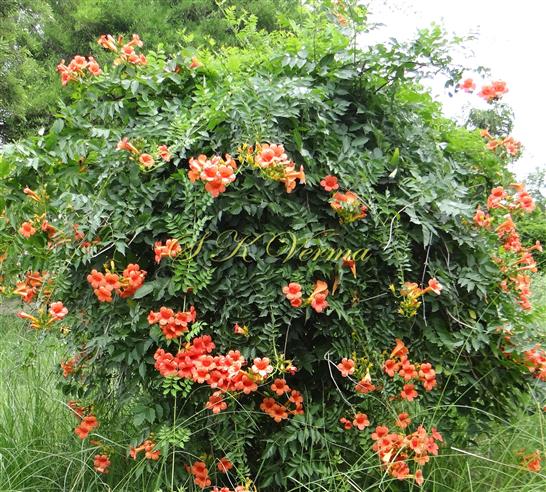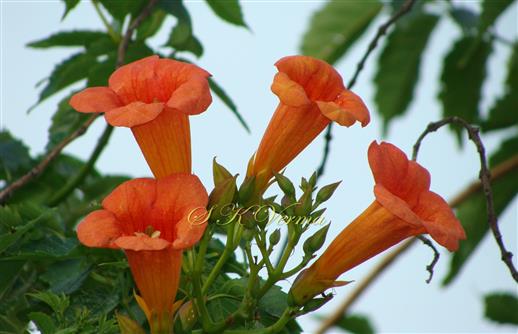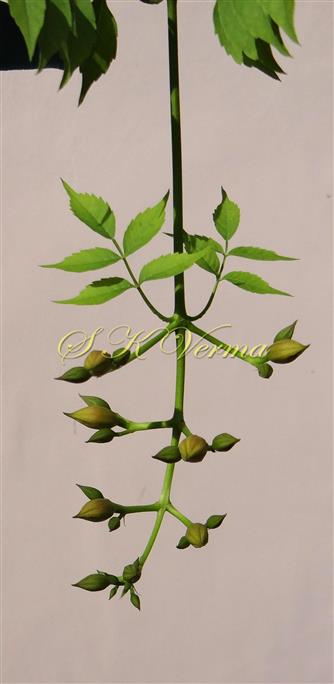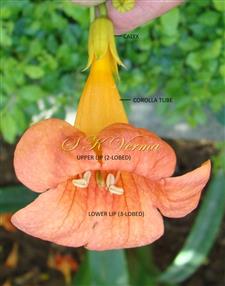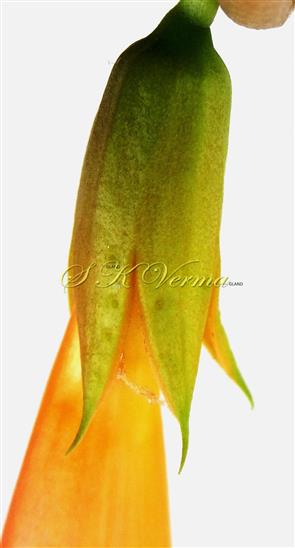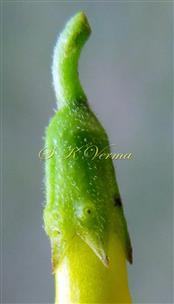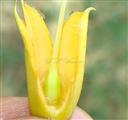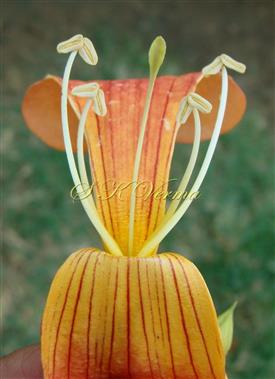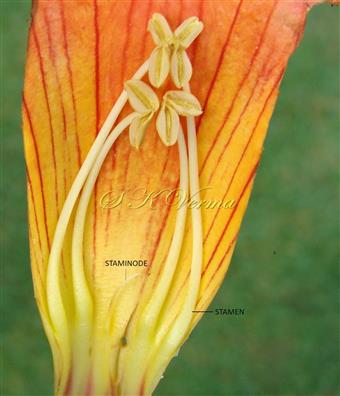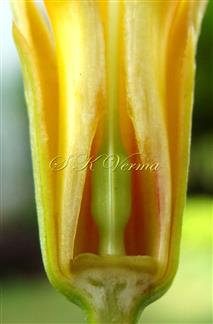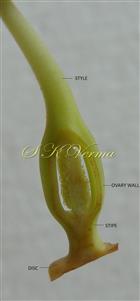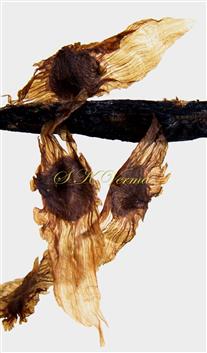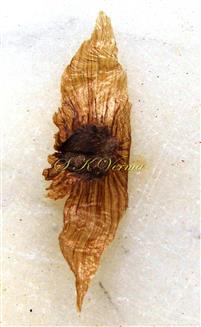CAMPSIS
Campsis
Lour., Fl. Cochinch. 2: 377. 1790; Bailey, Stand. Cyclop. Hort. 1: 651. 1919; Adanson, Fl. Pak. @ eFloras.org p. 15; Fl. China @ eFloras.org 18: 220.
Vines woody, deciduous, climbing with adventitious roots. Leaves opposite, 1-pinnate, imparipinnate with 5-9(-11) leaflets, leaflets serrate. Flowers in terminal drooping short paniculate inflorescence, bisexual, zygomorphic, hypogynous, large, orange, orange-red or scarlet. Calyx tubular-campanulate, subleathery, 5-lobed, glandular or eglandular. Corolla orange, orange-red or scarlet, funnelform, 5-lobed, slightly 2-lipped, lobes rounded, spreading. Stamens 4, included, didynamous, curved, usually 1 staminode. Carpels 2, syncarpous; ovary 2-locular, ovules many per loculus, placentation axile, base surrounded by large disc. Capsules linear. Seeds many, discoid, with transparent wings.
2 species
Campsis radicans
Campsis radicans
(L.) Bureau, Monogr. Bignon. 2 (Atlas): 16. 1864; Bailey, Stand. Cyclop. Hort. 1: 651. 1919; Stewart, R. R., Ann. Cat. Vasc. Pl. W. Pak. and Kashm. 668. 1972; Maheshwari, Fl. Delhi. 1963; Fl. Pak. @ eFloras.org p. 16; keralaplants.in; Bignonia radicans L., Sp. Pl. 624. 1753; Tecoma radicans (L.) Juss., Gen. Pl. 139. 1789.
A deciduous shrub climbing by adventitious roots at nodes reaching height up to 10 m. Leaves opposite, imparipinnate, ca. 22 cm x 14 cm, petiole up to 4 cm long, pulvinate at base, petiole and rachis margined, margin sparsely pubescent; leaflets 7-11, sessile or subsessile, blade 3.5-7(-11.5) cm x 2-3.5(-4.5) cm, ovate, apex acute to acuminate, margin coarsely serrate except basal part, base cuneate, upper surface glabrous or puberulent when young, lower surface pubescent on midrib and veins, 5-7 lateral veins on each side of midrib; interpetiolar and interpetiolular regions with long white hairs adaxially. Inflorescence terminal short paniculate bearing pedunculate corymbose dichasial cymes in opposite decussate manner arranged in racemose manner. Flowers 7-8 cm long and 5-5.5 cm across, funnelform, bisexual, zygomorphic, hypogynous, orange to orange-red; pedicels up to 2.5 cm long subtended by small linear bracts. Sepals 5, fused: calyx ca. 2.5 cm long, tubular, glabrous or pubescent; tube ca. 1.5 cm long; lobes 5, ca. 1.5 cm x 5-6 mm, lanceolate, occasionally short and triangular, usually acuminate, lobes with few sessile circular glands. Corolla funnelform, up to 8 cm long, orange or orange-red; tube slightly curved, 4.5-5 cm long, basal ca. 1.5 cm long narrow and cylindrical, gradually widened upwards and ca. 2.5 cm wide near throat; limb 5-5.5 cm across, slightly zygomorphic and 2-lipped, upper lip of 2 lobes and lower of 3 lobes, lobes subequal, suborbicular, rounded, ca. 2 cm x 2 cm, spreading, throat and tube with dark longitudinal streaks. Stamens 4, inserted at contracted portion of corolla tube, included, didynamous; filaments of larger stamens ca. 3 cm long and ca. 2 cm of shorter stamens, glabrous; anthers bithecous, 5-6 mm long, ovate-oblong, thecae divaricate, yellow; staminode 1. Carpels 2, syncarpous; ovary ca. 8 mm long, stipitate, subterete, 2-locular, many ovules in 2 series on axile placenta per loculus, large annular disc below the ovary; style ca. 4.5 cm long; stigma ca. 3 mm broad, flattened, spathulate, 2-lobed. Capsule 12.5-15 cm x 0.8-1.5 cm, stipitate (stipe ca. 1.5 cm long), pendulous, woody, curved, beaked at apex, bivalved, dehiscence longitudinal. Seeds ca. 4.5 mm x 4.5 mm, brownish, 2-winged.
Common Names: Trumpet Creeper, Yellow Trumpet Vine, Cow Itch Vine, Hummingbird vine
